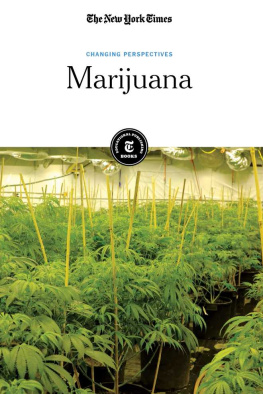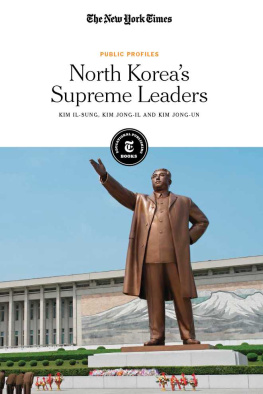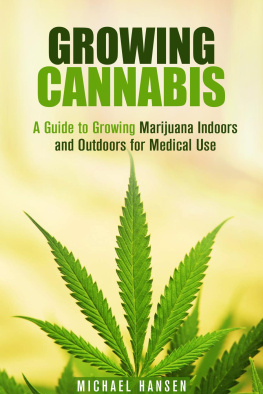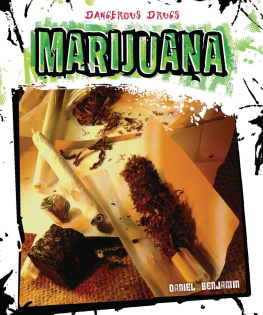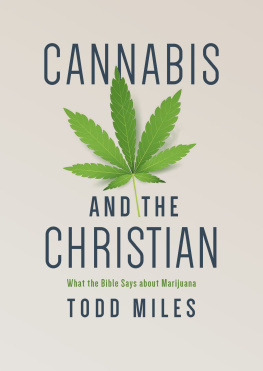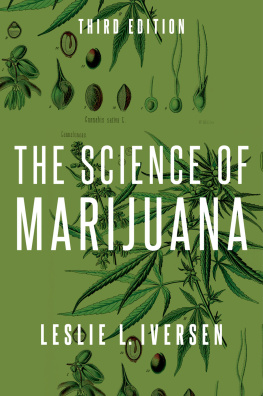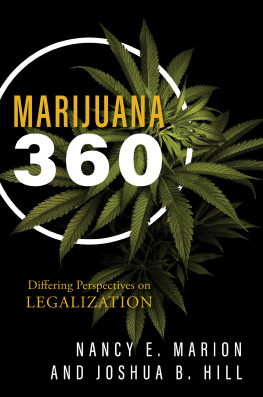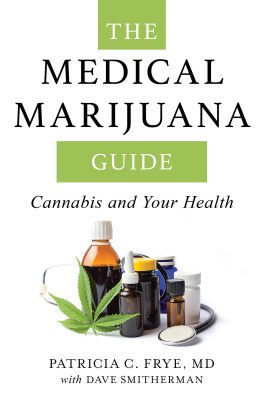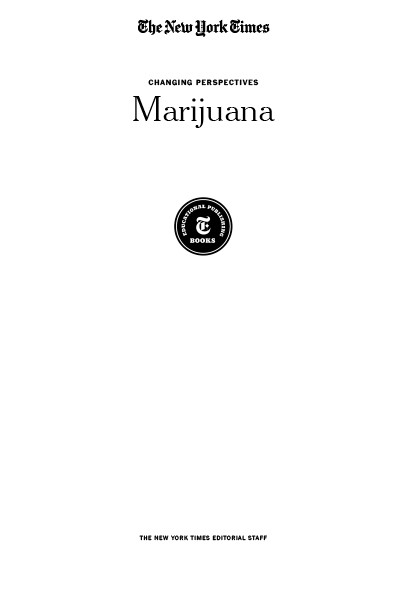Published in 2019 by The New York Times Educational Publishing in association with The Rosen Publishing Group, Inc.
29 East 21st Street, New York, NY 10010
Contains material from The New York Times and is reprinted by permission. Copyright 2019 The New York Times. All rights reserved.
Rosen Publishing materials copyright 2019 The Rosen Publishing Group, Inc. All rights reserved. Distributed exclusively by Rosen Publishing.
First Edition
The New York Times
Alex Ward: Editorial Director, Book Development Phyllis Collazo: Photo Rights/Permissions Editor Heidi Giovine: Administrative Manager
Rosen Publishing
Megan Kellerman: Managing Editor Jacob R. Steinberg: Editor Greg Tucker: Creative Director Brian Garvey: Art Director
Cataloging-in-Publication Data
Names: New York Times Company.
Title: Marijuana / edited by the New York Times editorial staff. Description: New York : New York Times Educational Publishing, 2019. | Series: Changing perspectives | Includes glossary and index. Identifiers: ISBN 9781642821499 (library bound) | ISBN 9781642821482 (pbk.) | ISBN 9781642821505 (ebook)
Subjects: LCSH: Marijuana abuseJuvenile literature. |
MarijuanaJuvenile literature.
Classification: LCC HV5822.M3 M375 2019 | DDC 613.8'35dc23
Manufactured in the United States of America
On the cover: Cannabis (marijuana) plants growing inside a flower room at the River Rock Medical Marijuana Center in Denver,
Colo.; Matthew Staver for The New York Times.
Contents
CHAPTER 1
1900s50s: Americans Fear Reefer Madness
CHAPTER 2
1960s70s: From the Village to Vietnam,Embracing Pot
CHAPTER 3
1980s90s: The U.S. Governments War on Drugs
CHAPTER 4
Since 2000: States, and the Public,Embrace Legalization
Introduction
strictly speaking, cannabis is the name of a genus of plants used for a variety of industrial uses (hemp) and medical and recreational uses (marijuana). Perspectives on the legitimacy of the latter have varied greatly through the decades, but today, a trend toward the legalization and scientific study of cannabis is growing. As such, the history of cannabis and our perspectives on it merit attention to separate fact from fiction and to understand from where these perspectives originate.
American cultural attitudes toward marijuana in the late nineteenth and early twentieth centuries associated the drug with Mexican and Latino culture. In a Jan. 6, 1901, article titled Doctors of Ancient Mexico, a New York Times correspondent described the effects of marijuana as a long, deathlike sleep. The United States government demanded greater cooperation from its Mexican counterpart in policing the border and destroying cannabis crops in both countries.
By the 1930s, the American public feared cannabis. This attitude was spurred on by pleas to parents to fight a war against the drug and a popular 1936 propaganda film, Reefer Madness, in which a group of high school students lured to try marijuana engage in a series of dangerous crimes.
Crime statistics and early medical research disproved a lot of the myths surrounding cannabiss effects on users, but the passage of the Marihuana Tax Act of 1937 made its cultivation, possession, importation and distribution regulated and expensive, curbing medical studies and fueling police raids and demonstrations in which confiscated cannabis was publicly burned.

JIM WILSON/THE NEW YORK TIMES
The flowering buds of the cannabis plant are often ground and smoked, though a variety of preparations exist for both recreational and medicinal use of marijuana.
In the 1960s, however, cultural attitudes began to shift as the counterculture came to reject establishment values, and Bohemian scenes flourished in large urban centers. The beatniks and hippies of the 1960s opposed the Vietnam War and supported the Civil Rights Movement and the womens liberation movement, and many experimented with marijuana and lysergic acid diethylamide (LSD). The values of the counterculture became pervasive on college campuses, and marijuana became increasingly common among affluent youth.
In 1970, the cultural embrace of cannabis met its enemy in the Nixon administration, which declared drug abuse public enemy number one and sought to combat the distribution of cannabis and other substances via the Comprehensive Drug Abuse Prevention and Control Act of 1970. The act made cannabis a Schedule I drug, claiming it had no legitimate medical use and was prone to abuse. In 1973, the Drug Enforcement Agency was created to enforce these regulations.
Throughout the 1980s and 90s, the United States continued to engage in a costly war on drugs consisting of foreign aid to governments battling drug cartels, education campaigns focused on deterring schoolchildren and teenagers from trying drugs, and the incarceration of drug traffickers.
Beginning in the late 1990s and continuing until today, states have gradually embraced the legalization of cannabis, initially for only medicinal use but more recently for recreational use as well. Federal classification of cannabis has not changed, though enforcement has been inconsistent in the face of growing legalization in individual states and more relaxed cultural attitudes.
Today, as cannabis becomes increasingly available and its use less stigmatized, studies of the beneficial and adverse effects of its use are changing our understanding of its potential. One risk previously unidentified is cannabinoid hyperemesis syndrome, a condition triggered by heavy cannabis use and characterized by recurrent vomiting and nausea. Though cured by abstinence, the adverse effects observed in patients suffering from the syndrome stand in sharp contrast to its therapuetic effects in patients with cancer or other chronic illness.
On the cultural front, the social justice movement has brought attention to the widely varying discrepancies in arrest and incarceration rates based on race as well as the big money behind the private prison system, which is heavily invested in increasing prison population size.
Now, as several states (such as California, Washington and Colorado, to name a few) and Canada have made recreational marijuana legal, cannabis is a multibillion-dollar business, and it would seem the tide would be difficult to turn back.
The articles that follow bear witness to the changing perspectives on cannabis through the ages and offer various lenses through which to view the current trend toward legalization and its impact. While this trend is still developing, much research is yet to be done on the longterm effects of cannabis and the full scope of its applications.
CHAPTER 1
1900s-50s: Americans Fear Reefer Madness
In the first half of the twentieth century, Americans predominantly associated cannabis with Mexico and Latin American immigrants. This belief manifested in racist attitudes toward Latinos in the United States and demands for tighter border patrol on the Mexico-United States border. In these decades, the first laws were passed classifying cannabis as a narcotic and establishing sentences for its trafficking, though sentencing varied vastly from state to state. Meanwhile, medical researchers began to study the risks and possible benefits of cannabis use.

